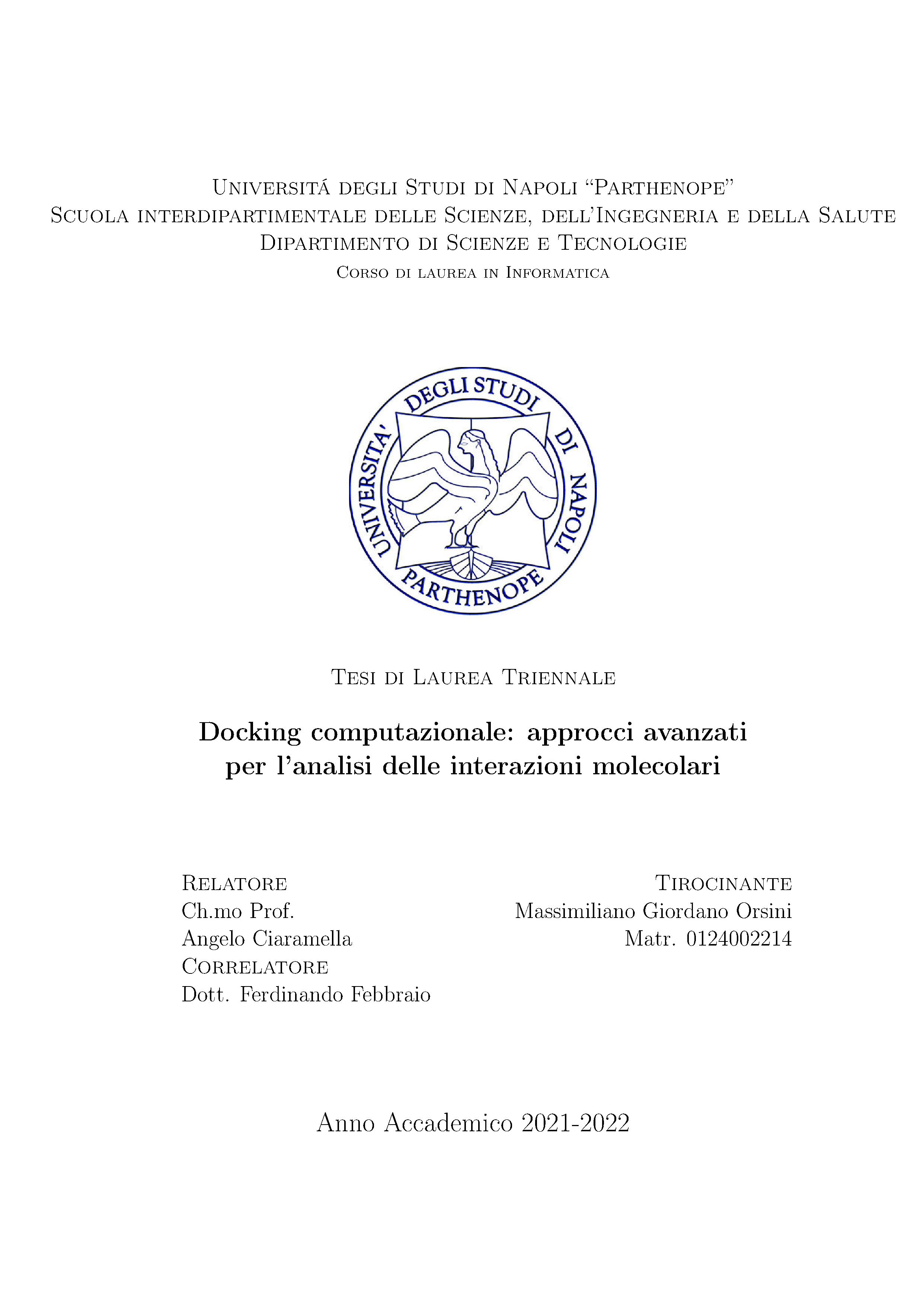Author: Massimiliano Giordano Orsini
University: Università degli Studi di Napoli 'Parthenope'
Bachelor of: Computer Science
Date: November 23rd, 2022
Language: Italian
In the modern age, neural networks represent an established reality thanks to the achievement of important objectives and significant results in various application fields: from autonomous driving to medical diagnoses, passing through optical character recognition systems. The main reasons for the exponential growth of the application of neural networks are due to the ability of extracting the characteristics independently from the learning phase and to the computing power achieved by modern computers, which allows to solve heavy computational cores in relatively short times, through the latest generation graphics cards. In recent years, the search for advanced deep learning approaches and the development of convolutional neural networks have also established themselves in the field of computational docking, trying to replace existing applications based on different traditional approaches, which combine physical, empirical and stochastic knowledge, deriving from the application domain.
After introducing some notions and concepts in the field of molecular docking, the steps, essential requirements and applications of computational docking are discussed, focusing on the correlation between exposure to pesticides and the reduction of honey bee colonies, subject of the internship work to which the proposed application is strongly inspired.
Starting from the introduction of the fundamental concepts of deep learning, the paper focuses on a particular computational docking software that allows the use of convolutional neural networks in different phases of the docking process (GNINA). In order to focus on GNINA's performance, a term of comparison is introduced, represented by AutoDock Vina, a docking software based on an empirical approach, widely used in classical risk assessment analyses about protein-ligand interactions. The above softwares and related approaches are discussed in depth, going into relevant discussion details where necessary.
In order to describe the implemented application, from the development phase to the production of the experimental results, the technologies and platforms used are motivated as well as the internal or external dependencies of the application. The paper proposes a procedure for preparing the initial dataset prior to the docking process, to ensure a uniform and equivalent basis to the compared softwares, and a procedure for analyzing and evaluating molecular interactions to highlight the differences between the aforementioned softwares and therefore the these approaches, in terms of results and observed interactions, in order to better understand and underline the strengths and weaknesses of the application of convolutional neural networks.
The experimental results show that the performance of the convolutional neural network applied within GNINA, configured by default, gives rise to results that are summarily different from those provided by traditional software for blind docking analysis. For this reason, the ideal solution corresponds to a complementary use of the two approaches, exploiting the positive characteristics of each.
